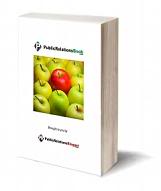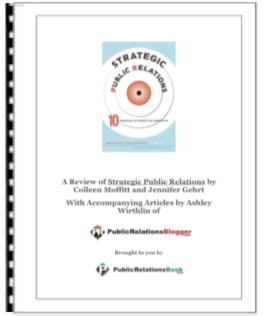________________________________________________________________________
 You may remember Forrest Gump’s Vietnam pal - the one who grew up shrimp farming and was fond of listing the dishes he used to make. “Pepper shrimp,” he started, gearing up for his lengthy monotone monologue. “Shrimp soup. Shrimp stew. Shrimp salad. Shrimp and potatoes. Shrimp burger.”
You may remember Forrest Gump’s Vietnam pal - the one who grew up shrimp farming and was fond of listing the dishes he used to make. “Pepper shrimp,” he started, gearing up for his lengthy monotone monologue. “Shrimp soup. Shrimp stew. Shrimp salad. Shrimp and potatoes. Shrimp burger.”
That was the first thing I thought of when I saw the front page of The Washington Post’s Food section last February. Staring up at me was a half-page photo filled with all sorts of yummy-looking prepared shrimp. The delectable photo was followed by two pages of text glorifying the tasty creature.
But missing from the article was any mention of the environmental concerns about shrimp. For example, the capture of only one pound of shrimp in the ocean kills more than 10 pounds of other marine life, which just happens to be in the wrong place at the wrong time.
At the time, I was working with an environmental group. We quickly moved into action. I called a scientist with whom I worked frequently. We drafted a fact-filled two paragraph letter to the editor and submitted it to The Post. It was published the next week, one of the rare letters to appear regarding an article in the Food section.
How did we break through the hundreds of other letters submitted to the Post each day - and more importantly, how can you? Here are seven rules to getting your letter published.
1. Act Quickly. We had our letter in the hands of the Post within 24 hours of the article’s publication. The quicker you submit your letter, the greater your chances of being published.
2. Know the Rules. Most news organizations post the rules for letter submissions - including preferred length and method of delivery - on their websites.
3. Be Concise. Most newspapers will run letters no longer than three paragraphs in length. If you don’t edit your letter, the news organization will either decline to run it or will edit it for you. Maintain control of your words by keeping your letter short.
4. Keep it Simple. Letters to the editor aren’t places for complicated jargon. Your letter should be self-contained, meaning it’s understandable to readers who missed the original article.
5. Take a Stand / Issue a Call to Action. Editors like letters that take a strong position. Be direct, controversial, or adversarial, and tell readers what you want them to do - it enhances your likelihood of getting published.
6. Localize. Most newspapers are considered local or regional. If your letter concerns something larger in scope, give a relevant example. For instance, if you’re writing about your concern over global warming, explain how the effects of climate change would affect the local community.
7. Follow-Up. Most letters pages get an influx of new letters each day. Placing a phone call to your newspaper’s letters desk often gets it removed from the bottom of the pile.
In reality, most letters won’t contain all of the above ingredients, but they should include as many as possible. The Washington Post letter we successfully placed contained six of the seven; we failed to make it local since the original story was global in nature.
As an example, the published letter is below:
EXAMPLE OF A PUBLISHED LETTER TO THE EDITOR
"Your recent article 'So Much Shrimp' [Food, Feb. 25] failed to mention the tremendous environmental costs associated with shrimp fishing. Each pound of wild shrimp caught causes the death of 10 or more pounds of other marine life. This 'by-catch' is simply tossed back into the ocean. Shrimp fisheries are responsible for more than 11 million tons of by-catch deaths annually. When shrimp trawlers drag their heavy nets across the ocean floor, they destroy coral reefs, sea grasses and other marine life; flatten terrain; and kill numerous fish, turtles, starfish and crabs, among other creatures.
New techniques for farming shrimp are beginning to resolve issues relating to pollution, genetic contamination, disease, and destruction of natural coastal mangroves and wetlands that have long plagued aquaculture operations. Consumers can help by learning about the economic and environmental costs on destructive fishing and fish farming."
Signed,
Sylvia Earle
Executive Director, Global Marine Program, Conservation International
Brad Phillips is the founder and president of Phillips Media Relations. He was formerly a journalist for ABC News and CNN, and headed the media relations department for the second largest environmental group in the world.
For more information and to sign up for free monthly media relations and media training e-tips, click here.
Article Source.
Tags: letter to the editor, getting your letter published, public relations, PR
|

Tips to Getting Your Letter to the Editor Published
________________________________________
 You may remember Forrest Gump’s Vietnam pal - the one who grew up shrimp farming and was fond of listing the dishes he used to make. “Pepper shrimp,” he started, gearing up for his lengthy monotone monologue. “Shrimp soup. Shrimp stew. Shrimp salad. Shrimp and potatoes. Shrimp burger.”
You may remember Forrest Gump’s Vietnam pal - the one who grew up shrimp farming and was fond of listing the dishes he used to make. “Pepper shrimp,” he started, gearing up for his lengthy monotone monologue. “Shrimp soup. Shrimp stew. Shrimp salad. Shrimp and potatoes. Shrimp burger.”That was the first thing I thought of when I saw the front page of The Washington Post’s Food section last February. Staring up at me was a half-page photo filled with all sorts of yummy-looking prepared shrimp. The delectable photo was followed by two pages of text glorifying the tasty creature.
But missing from the article was any mention of the environmental concerns about shrimp. For example, the capture of only one pound of shrimp in the ocean kills more than 10 pounds of other marine life, which just happens to be in the wrong place at the wrong time.
At the time, I was working with an environmental group. We quickly moved into action. I called a scientist with whom I worked frequently. We drafted a fact-filled two paragraph letter to the editor and submitted it to The Post. It was published the next week, one of the rare letters to appear regarding an article in the Food section.
How did we break through the hundreds of other letters submitted to the Post each day - and more importantly, how can you? Here are seven rules to getting your letter published.
1. Act Quickly. We had our letter in the hands of the Post within 24 hours of the article’s publication. The quicker you submit your letter, the greater your chances of being published.
2. Know the Rules. Most news organizations post the rules for letter submissions - including preferred length and method of delivery - on their websites.
3. Be Concise. Most newspapers will run letters no longer than three paragraphs in length. If you don’t edit your letter, the news organization will either decline to run it or will edit it for you. Maintain control of your words by keeping your letter short.
4. Keep it Simple. Letters to the editor aren’t places for complicated jargon. Your letter should be self-contained, meaning it’s understandable to readers who missed the original article.
5. Take a Stand / Issue a Call to Action. Editors like letters that take a strong position. Be direct, controversial, or adversarial, and tell readers what you want them to do - it enhances your likelihood of getting published.
6. Localize. Most newspapers are considered local or regional. If your letter concerns something larger in scope, give a relevant example. For instance, if you’re writing about your concern over global warming, explain how the effects of climate change would affect the local community.
7. Follow-Up. Most letters pages get an influx of new letters each day. Placing a phone call to your newspaper’s letters desk often gets it removed from the bottom of the pile.
In reality, most letters won’t contain all of the above ingredients, but they should include as many as possible. The Washington Post letter we successfully placed contained six of the seven; we failed to make it local since the original story was global in nature.
As an example, the published letter is below:
EXAMPLE OF A PUBLISHED LETTER TO THE EDITOR
"Your recent article 'So Much Shrimp' [Food, Feb. 25] failed to mention the tremendous environmental costs associated with shrimp fishing. Each pound of wild shrimp caught causes the death of 10 or more pounds of other marine life. This 'by-catch' is simply tossed back into the ocean. Shrimp fisheries are responsible for more than 11 million tons of by-catch deaths annually. When shrimp trawlers drag their heavy nets across the ocean floor, they destroy coral reefs, sea grasses and other marine life; flatten terrain; and kill numerous fish, turtles, starfish and crabs, among other creatures.
New techniques for farming shrimp are beginning to resolve issues relating to pollution, genetic contamination, disease, and destruction of natural coastal mangroves and wetlands that have long plagued aquaculture operations. Consumers can help by learning about the economic and environmental costs on destructive fishing and fish farming."
Signed,
Sylvia Earle
Executive Director, Global Marine Program, Conservation International
Brad Phillips is the founder and president of Phillips Media Relations. He was formerly a journalist for ABC News and CNN, and headed the media relations department for the second largest environmental group in the world.
For more information and to sign up for free monthly media relations and media training e-tips, click here.
Article Source.
Tags: letter to the editor, getting your letter published, public relations, PR
Popular choices
- Non Gamstop Casino
- Mejores Salas De Póker
- Casino Non Aams
- Non Gamstop Casinos
- Siti Casino Online Non Aams
- Migliori Siti Casino Online
- UK Online Casinos Not On Gamstop
- Non Gamstop Casino Sites UK
- Non Gamstop Casino Sites UK
- UK Casino Not On Gamstop
- Casinos Not On Gamstop
- Online Casino
- オンラインカジノ
- UK Casino Not On Gamstop
- UK Casino Not On Gamstop
- Reputable Non Gamstop Casinos
- Casinos Not On Gamstop
- Best Non Gamstop Casinos
- Non Gamstop Casino
- Casinos Not On Gamstop
- Slots Not On Gamstop
- Non Gamstop Casino
- Casino Non Aams
- Casinos Not On Gamstop
- Betting Sites Not On Gamstop
- Casino Online Italia
- Casino En Ligne
- Casino En Ligne Belgique
- KYC 인증 없는 카지노
- Sites De Paris Sportif Fiables
|
| What did you think? |
Filed Under:
getting your letter published,
letter to the editor,
PR,
public relations
Subscribe to:
Post Comments (Atom)






Comments (0)
Post a Comment